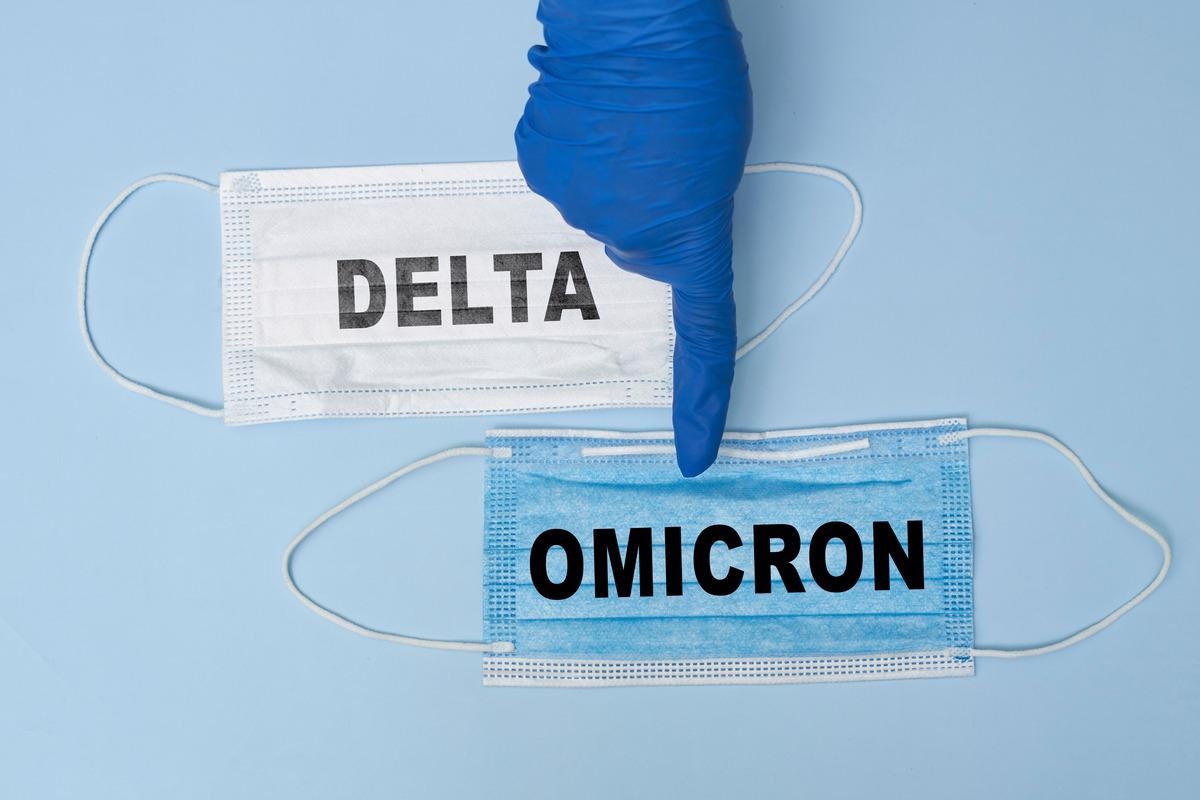First cases of co-infection with Delta and Omicron identified during local co-circulation of both SARS-CoV-2 lineages
In a recent study posted to the medRxiv* preprint server, researchers revealed the co-infection of the severe acute respiratory syndrome coronavirus 2 (SARS-CoV-2) Delta and Omicron variants in two epidemiologically unrelated patients suffering from chronic kidney disease and requiring hemodialysis. Both the variants were co-circulating locally in Sydney at the time of detection.
 Study: Co-infection with SARS-COV-2 Omicron and Delta Variants Revealed by Genomic Surveillance. Image Credit: G.Tbov/Shutterstock
Study: Co-infection with SARS-COV-2 Omicron and Delta Variants Revealed by Genomic Surveillance. Image Credit: G.Tbov/Shutterstock
Co-infection involving different SARS-CoV-2 variants has been rarely reported during the first wave of the coronavirus disease 2019 (COVID-19) pandemic. Studies have suggested that co-infections could result in greater disease duration and severity. However, co-infections with variants of concern (VOCs) such as Delta or Omicron have not previously been reported, particularly in immunosuppressed hosts.
About the study
In the present study, researchers reported the first cases of Delta and Omicron co-infection in Sydney in two immunocompromised individuals at risk of severe COVID-19. The co-infection was identified when there was local co-circulation of both the SARS-CoV-2 variants.
Case A was aged between 60 to 70 years, presented to the Emergency Department (ER) with mild respiratory symptoms, and later tested positive for SARS-CoV-2 by polymerase chain reaction (PCR) of a nasopharyngeal swab. Case B was aged between 50 to 60 years, presented with fever, and was later diagnosed PCR-positive for SARS-CoV-2.
Samples from both patients were subjected to whole genome sequencing as part of the genomic surveillance program in New South Wales (NSW). Only genomes clearly assigned to SARS-CoV-2 variants are reported to the authorities and shared on the global initiative on sharing all influenza data (GISAID). However, the genomes from Cases A and B showed unexpectedly high "heterozygous" signals and could not be confidently assigned to one SARS-CoV-2 lineage using the Pangolin software.
This triggered a detailed case review which revealed that both cases had chronic kidney disease as a result of type 2 diabetes, in addition to ischemic heart disease and obesity. Also, both the patients were receiving hemodialysis thrice weekly at the same dialysis center and hence were potentially exposed to multiple COVID-19 patients during the treatment sessions.
The infection control measures at the dialysis center to prevent nosocomial COVID-19 transmission included masking of patients, physical distancing, disinfection of dialysis equipment and treatment stations after every session, the use of personal protective equipment by clinical staff, and PCR testing of patients at the time of treatment.
Despite the similarities in demographics, the patients were unknown to each other and had not been at a dialysis session at the same time nor used the same treatment station or dialysis equipment. While neither of them had prior COVID-19 infection, Case A had received two doses of the Pfizer vaccine, the second dose ten weeks before the diagnosis, and Case B was not vaccinated by choice.
The researchers used amplicon- and probe-based sequencing with short- and long-read technologies to identify and measure Delta and Omicron subpopulations in respiratory samples taken from the patients.
Observations
A review of the relative frequency of 10 Delta and 17 Omicron variant-defining markers showed co-infection with both variants. All three sequencing methods showed a highly similar overall proportion of Omicron and Delta. However, four lineage markers revealed amplification bias when amplifying SARS-CoV-2 using Midnight primers.
Population analysis of the genomic data obtained showed that the proportions of variants in samples from Case A were 77% Delta and 21% Omicron on Day 2, compared to 53% Delta and 45% Omicron on Day 3. In samples from Case B, the proportions were 53% Delta and 42% Omicron on Day 3 and 84% Delta and 11% Omicron on Day 11.
Despite having the same mixed infection pattern, the two patients were not genomically linked in the transmission pathway. The two Omicron sequences distinctly represented the Omicron sub-lineage BA.1, which was predominant in Sydney at the time of the study. In comparison, the two Delta sequences were part of different genomic clusters of the AY.39.1 sub-lineage of Delta that was also circulating locally at the time.
It appeared that Case B was initially infected by Omicron and then superinfected with Delta immediately prior to admission since the Day 0 sample of Case B had only Omicron sequences and Day 3 samples had high viral loads of Delta and Omicron.
Conclusion
The study findings underscore the significance of genomic surveillance of SARS-CoV-2 in vulnerable populations to diagnose SARS-CoV-2 variant co-infections. These co-infections, especially in vulnerable hosts, may trigger saltational evolution, emphasizing the key role of COVID-19 genomic surveillance in diagnostic virology.
Although the observations support epidemiologically relevant and phylogenetically distinct SARS-CoV-2 variants in both patients, they are not enough to confirm whether these patients acquired dual SARS-CoV-2 co-infection after sequential exposures to cases infected by a single lineage. According to the authors, further studies on within-host population dynamics of SARS-CoV-2 are needed to understand these processes better.
The most likely hypothesis that explains this SARS-CoV-2 co-infection is the sustained exposure of vulnerable, immunosuppressed individuals to multiple Delta- or Omicron-infected patients during was widespread community co-circulation of both the variants.
*Important notice
medRxiv publishes preliminary scientific reports that are not peer-reviewed and, therefore, should not be regarded as conclusive, guide clinical practice/health-related behavior, or treated as established information.
-
Rockett, R. et al. (2022) "Co-infection with SARS-COV-2 Omicron and Delta Variants Revealed by Genomic Surveillance". medRxiv. doi: 10.1101/2022.02.13.22270755. https://www.medrxiv.org/content/10.1101/2022.02.13.22270755v1
Posted in: Medical Science News | Medical Research News | Disease/Infection News
Tags: Chronic, Chronic Kidney Disease, Coronavirus, Coronavirus Disease COVID-19, covid-19, Diabetes, Diagnostic, Dialysis, Disinfection, Evolution, Fever, Frequency, Genome, Genomic, Heart, Heart Disease, Infection Control, Influenza, Ischemic Heart Disease, Kidney, Kidney Disease, Nasopharyngeal, Obesity, Omicron, Pandemic, Personal Protective Equipment, Polymerase, Polymerase Chain Reaction, Respiratory, SARS, SARS-CoV-2, Severe Acute Respiratory, Severe Acute Respiratory Syndrome, Syndrome, Type 2 Diabetes, Vaccine, Virology, Whole Genome Sequencing

Written by
Susha Cheriyedath
Susha has a Bachelor of Science (B.Sc.) degree in Chemistry and Master of Science (M.Sc) degree in Biochemistry from the University of Calicut, India. She always had a keen interest in medical and health science. As part of her masters degree, she specialized in Biochemistry, with an emphasis on Microbiology, Physiology, Biotechnology, and Nutrition. In her spare time, she loves to cook up a storm in the kitchen with her super-messy baking experiments.
Source: Read Full Article


